Have set up a voltage divider inputting 1 volt into a LM741 op amp to act as a voltage follower. For some reason I get 2 volts at the output. Have checked everything I can think of and can’t figure out why.

Have set up a voltage divider inputting 1 volt into a LM741 op amp to act as a voltage follower. For some reason I get 2 volts at the output. Have checked everything I can think of and can’t figure out why.
This is an easy problem to understand if you look at the datasheet.
 The LM741 needs headroom at each rail to operate. What this is saying is for +/- 15V supplies, the output could swing as little as +/- 12V. If you're running it single supply like that, I guarantee it's slamming the negative rail. Upgrade to a modern op amp. For this application, I would look for something CMOS with a rail to rail output. A couple examples: TLC2272, LMC6462.
The LM741 needs headroom at each rail to operate. What this is saying is for +/- 15V supplies, the output could swing as little as +/- 12V. If you're running it single supply like that, I guarantee it's slamming the negative rail. Upgrade to a modern op amp. For this application, I would look for something CMOS with a rail to rail output. A couple examples: TLC2272, LMC6462.